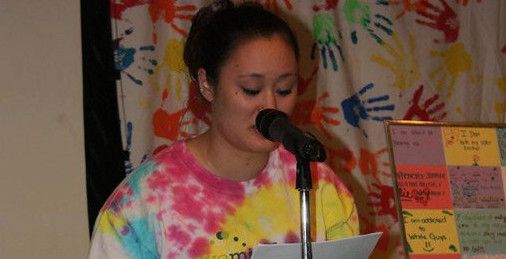
“I can’t even imagine my life having not attempted suicide.”
Sophomore Sara Allaire saw her first therapist for anxiety when she was 8 years old.
“Well I guess I’ve always had mental illness in my life because my aunt – she had schizophrenia – so when I was young I watched her go in and out of hospitals,” Allaire said. “Even if I didn’t know exactly what was going on I always knew what mental illness was and my parents had to educate me on it.”
A rising issue in the world today, one out of every four people lives with a mental health disorder. Mental health disorders are anything from generalized anxiety disorder to OCD to schizophrenia. Currently, there are not cures to most mental illnesses.
Allaire went back to therapy when she was in eighth grade for what was thought to be ADHD. In ninth grade, Allaire started self-harming for the first time. “At that point I was just cutting myself,” Allaire said. Allaire cut for some time but then she stopped for about six months because she didn’t want to let her parents down. However, because she wasn’t getting the help she needed, she started cutting again in places – like her legs – that her parents wouldn’t find.
There are approximately two million cases of self-harm reported annually in the U.S. and females represent 60% of those who engage in the act of self-harm.
Allaire didn’t revisit self-harm until she was a junior in high school. However, instead of cutting herself, the self-harm escalated to burning herself. “I would heat up a knife over the stove and then just stick it to my arm or leg. It sounds painful but it didn’t hurt at the time,” Allaire said.
Junior year of high school was one of the low points in Allaires’ life. “I started having mood swings where for two weeks at a time I would just be on top of the world and then I would just drop to extreme depression for months,” Allaire said.
Because Allaire was so depressed the summer before her senior year of high school, she began her attempts at suicide. “Over the summer I started making suicide attempts with cutting but either my mom would walk in on it or my sister would bang on the bathroom door or something would happen that would stop me,” Allaire said. “And I kept doing it probably every two weeks until October of senior year.”
Allaire noticed these mood swings during February of her junior year and these mood swings continued until October of her senior year. At a time when most students are looking at colleges and getting excited about what’s ahead, all Allaire wanted to do was quit. “I felt like I didn’t even have a future. And there’s all this pressure on me – because I was always in AP classes, honors classes, I was in National Honors Society and I never got anything less than a B – so there’s all this pressure on me to go to a good college and to do well and I just felt like I didn’t even want to be alive,” Allaire said.
Depression is a dangerous thing and can make anyone feel like they’re powerless and out of control. About one in 10 children live with a serious mental or emotional disorder and two-thirds of people that successfully complete a suicide attempt are depressed at the time of their death. One person attempts suicide every 38 seconds.
“So in October I took a bottle of sleeping pills,” Allaire said. “I texted my best friend kind of a goodbye text and I left a note and my best friend didn’t even hesitate and she called me and I didn’t answer so she called my parents.”
Allaire took the sleeping pills in the bathroom and when her parents found out, they broke the door down and took her to the E.R.
“I was there for about 12 hours before they took me to an inpatient hospital,” Allaire said. “The second day I was there they told me I had bipolar disorder.”
At the time, Allaire was only diagnosed as Bipolar II. Those who have Bipolar II only experience hypomania, not mania. Mania is described as a heightened state of mind, during which one finds themselves having excessive energy, rapid speech, reckless spending, etc. Hypomania is a less severe version of mania.
“Most of the time I can’t even remember what happens in mania,” Allaire said. “It’s like a completely different state, so I don’t even know half of the things that I did. And I don’t know if I’ll ever know.”
Bipolar disorder affects approximately 5.7 million Americans, or about 2.6% of the U.S. population, age 18 and older every year. As of now, there is no single cause for bipolar disorder.
“When I started experiencing the bipolar it was just so powerless,” Allaire said. “I guess the best way to describe it is that you’re just completely out of control.”
Although Allaire thought she would only be at the inpatient hospital for a few days, she ended up staying there for two weeks. “It was really hard for me, I would call my parents crying everyday; it’s a really scary place,” Allaire said.
Allaire went on to explain a few of the incidents she experienced while staying there. She said that she woke up one night to a girl ripping her radiator out of the wall because she was angry. Another kid got really angry as well and decided to trash his entire room, which resulted in him breaking every bone on the left side of his body. Allaire said that she was “completely cut off from society” while at the inpatient hospital.
“They would take away our privileges if one kid would act out,” Allaire said, “and they would always act out.”
It was at this time that Allaire entered into her only ever mixed state. A mixed state is where you cycle very rapidly between mania and depression. Allaire mentioned that at one moment she would be happy and excited and the next she would be crying for no reason. “That’s what people usually think of when they think of bipolar disorder – which is so wrong because it’s actually really rare. Mixed states don’t usually happen.”
Research indicates that approximately three times as many women experience rapid cycling as men.
After the two weeks in inpatient care, Allaire went to an outpatient hospital for another two weeks. “We had to write our addictions up on the board and you put the days that you’ve been clean next to your addiction,” Allaire said.
“There’s just something about having a big zero next to your name that’s like an extreme feeling of guilt mixed with sadness mixed with regret. And that’s the first time it every really hit me exactly what I was doing.”
After the four weeks at the inpatient and the outpatient hospitals, Allaire went back to school and started looking at colleges to attend. Although her parents offered her the opportunity to take the year off, Allaire thought that that would be a sign of failure.
“I just wanted to pretend that I was normal and that I didn’t actually attempt to kill myself and that that wasn’t something that happened,” Allaire said. “I put being normal in front of being mentally sane.”
Although Allaire started off well at Cabrini, during the second semester of her freshman year she had a relapse. “Relapse is a part of the game, it’s just what happens,” Allaire said. “I just stopped taking my medication all together. And things just started getting worse, I wasn’t sleeping, I almost failed out of my calculus class. My GPA dropped from a 3.8 to a 2.7.”
After Allaire relapsed she went back to her psychiatrist and asked what could be done to help. Her psychiatrist recommended going on medication, but Allaire didn’t want to. “I’ve been on almost every single medication for anxiety, for depression, for bipolar at this point,” Allaire said. “So when he would suggest something I’d say no.”
Eventually, her psychiatrist couldn’t help her anymore. “I kind of had this feeling of hopelessness; like nobody can help me if he can’t help me,” Allaire said.
An estimated two-thirds of all young people with mental health problems are not receiving the help they need. According to the National Alliance on Mental Illness, the annual economic, indirect cost of mental illness in the U.S. is estimated to be $79 billion.
“And I just spiraled down,” Allaire said. “My parents were telling me that they didn’t want me to come to Cabrini, that they wanted me to take a whole year off just to clear my head.” After debating with her parents, they finally let her come back to school as long as she started taking her medicine.
Since then, Allaire only had one minor relapse at the beginning of her sophomore year. “Right now in my life I think this is the time that I finally have everything under control,” Allaire said. “This is the first time that I feel like I can continue the rest of my life this way, hopefully with no relapse.”
Although Allaire didn’t enjoy everything she’s been through, she also doesn’t regret it. “It’s kind of funny because I don’t regret it at all and I’m actually really grateful for it because it’s completely changed my life for the better,” Allaire said. “I don’t think I’d be able to sit back and enjoy the little things without it having happened. I’m very grateful for everything that I’ve gone through which sounds weird, but I wouldn’t change it for anything. As much as you don’t want to say that mental illness is who you are, it actually is. It’s actually a big part of who you are and it changes everything, in good ways and in bad ways. It makes you who you are. Even if there’s no rhyme or reason for why you have it, you do and it shapes you. It’s okay to feel that way.”



